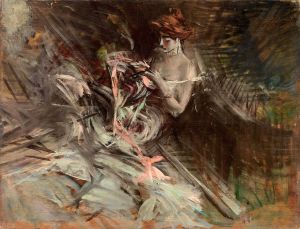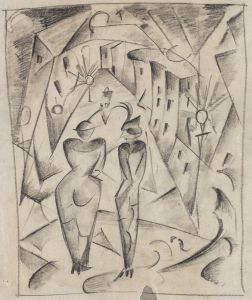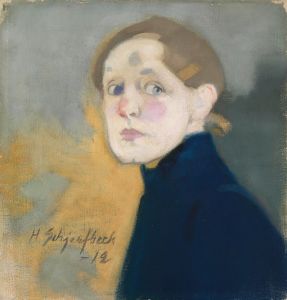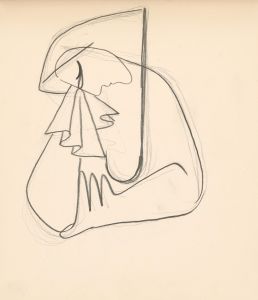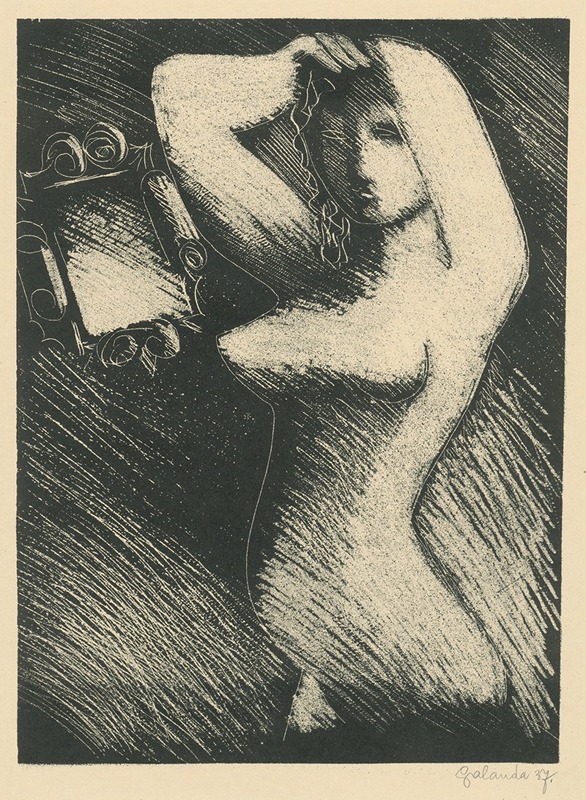
Woman in front of a mirror
A hand-painted replica of Mikuláš Galanda’s masterpiece Woman in front of a mirror, meticulously crafted by professional artists to capture the true essence of the original. Each piece is created with museum-quality canvas and rare mineral pigments, carefully painted by experienced artists with delicate brushstrokes and rich, layered colors to perfectly recreate the texture of the original artwork. Unlike machine-printed reproductions, this hand-painted version brings the painting to life, infused with the artist’s emotions and skill in every stroke. Whether for personal collection or home decoration, it instantly elevates the artistic atmosphere of any space.
"Woman in Front of a Mirror" is a painting by the Slovak artist Mikuláš Galanda, a prominent figure in the development of modern art in Slovakia during the early 20th century. Galanda, born on May 4, 1895, in Turčianske Teplice, was a key member of the avant-garde movement in Slovakia and played a significant role in shaping the modernist art scene in the region.
Galanda's work is characterized by its exploration of form, color, and composition, often reflecting the influences of Cubism, Expressionism, and other modernist movements. His art frequently depicted everyday subjects, infused with a sense of abstraction and emotional depth. "Woman in Front of a Mirror" is one such work that exemplifies his style and thematic interests.
The painting portrays a woman standing before a mirror, a motif that has been explored by many artists throughout art history. This theme allows for an exploration of self-perception, identity, and the interplay between reality and reflection. Galanda's interpretation of this subject is marked by his unique approach to form and color, utilizing bold lines and a vibrant palette to convey the psychological and emotional dimensions of the scene.
Galanda's use of color in "Woman in Front of a Mirror" is particularly noteworthy. He employs a range of hues to create a dynamic composition that draws the viewer's eye across the canvas. The interplay of light and shadow, along with the use of contrasting colors, adds depth and dimension to the work, enhancing its visual impact.
The composition of the painting is carefully constructed, with the figure of the woman positioned centrally, drawing attention to her interaction with the mirror. Galanda's treatment of the human form is both stylized and expressive, reflecting his interest in capturing the essence of his subjects rather than adhering to strict realism. This approach allows for a more nuanced exploration of the woman's inner world, as suggested by her contemplative pose and the enigmatic expression on her face.
Mikuláš Galanda's contribution to Slovak art extends beyond his individual works. As a member of the "Generation of 1909," a group of Slovak artists who sought to break away from traditional academic art, he was instrumental in introducing modernist ideas to the region. His work, including "Woman in Front of a Mirror," reflects the broader cultural and artistic shifts occurring in Europe during the early 20th century, as artists grappled with new ways of seeing and representing the world.
Galanda's legacy is preserved in various collections, and his influence continues to be felt in Slovak art. His innovative approach to form and color, as well as his commitment to exploring the human condition through art, make "Woman in Front of a Mirror" a significant work in his oeuvre and an important piece in the history of Slovak modernism.





